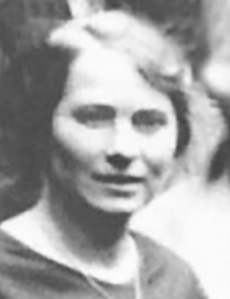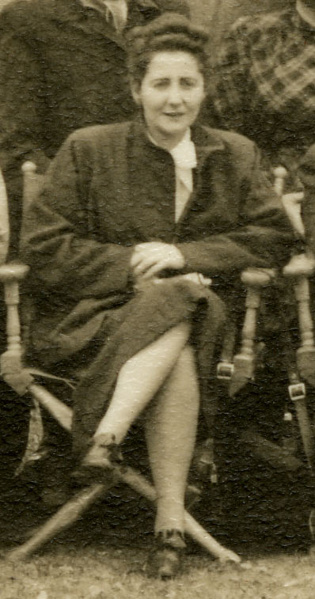Psychoanalysis is a set of theories and therapeutic techniques that deal in part with the unconscious mind, and which together form a method of treatment for mental disorders. The discipline was established in the early 1890s by Sigmund Freud, whose work stemmed partly from the clinical work of Josef Breuer and others. Freud developed and refined the theory and practice of psychoanalysis until his death in 1939. In an encyclopedic article, he identified the cornerstones of psychoanalysis as "the assumption that there are unconscious mental processes, the recognition of the theory of repression and resistance, the appreciation of the importance of sexuality and of the Oedipus complex." Freud's colleagues Alfred Adler and Carl Gustav Jung developed offshoots of psychoanalysis which they called individual psychology (Adler) and analytical psychology (Jung), although Freud himself wrote a number of criticisms of them and emphatically denied that they were forms of psychoanalysis. Psychoanalysis was later developed in different directions by neo-Freudian thinkers, such as Erich Fromm, Karen Horney, and Harry Stack Sullivan.
"Rat Man" was the nickname given by Sigmund Freud to a patient whose "case history" was published as Bemerkungen über einen Fall von Zwangsneurose ["Notes Upon a Case of Obsessional Neurosis"] (1909). This was the second of six case histories that Freud published and the first in which he claimed that the patient had been cured by psychoanalysis.
Psychoanalytic theory is the theory of personality organization and the dynamics of personality development relating to the practice of psychoanalysis, a clinical method for treating psychopathology. First laid out by Sigmund Freud in the late 19th century, psychoanalytic theory has undergone many refinements since his work. The psychoanalytic theory came to full prominence in the last third of the twentieth century as part of the flow of critical discourse regarding psychological treatments after the 1960s, long after Freud's death in 1939. Freud had ceased his analysis of the brain and his physiological studies and shifted his focus to the study of the psyche, and on treatment using free association and the phenomena of transference. His study emphasized the recognition of childhood events that could influence the mental functioning of adults. His examination of the genetic and then the developmental aspects gave the psychoanalytic theory its characteristics. Starting with his publication of The Interpretation of Dreams in 1899, his theories began to gain prominence.
Herbert "Harry" Stack Sullivan was an American Neo-Freudian psychiatrist and psychoanalyst who held that "personality can never be isolated from the complex interpersonal relationships in which [a] person lives" and that "[t]he field of psychiatry is the field of interpersonal relations under any and all circumstances in which [such] relations exist". Having studied therapists Sigmund Freud, Adolf Meyer, and William Alanson White, he devoted years of clinical and research work to helping people with psychotic illness.
Transference is a phenomenon within psychotherapy in which repetitions of old feelings, attitudes, desires, or fantasies that someone displaces are subconsciously projected onto a here-and-now person. Traditionally, it had solely concerned feelings from a primary relationship during childhood.
Heinz Kohut was an Austrian-born American psychoanalyst best known for his development of self psychology, an influential school of thought within psychodynamic/psychoanalytic theory which helped transform the modern practice of analytic and dynamic treatment approaches.
Interpersonal psychoanalysis is based on the theories of American psychiatrist Harry Stack Sullivan (1892–1949). Sullivan believed that the details of a patient's interpersonal interactions with others can provide insight into the causes and cures of mental disorder.

Sabina Nikolayevna Spielrein was a Russian physician and one of the first female psychoanalysts. She was in succession the patient, then student, then colleague of Carl Gustav Jung, with whom she had an intimate relationship during 1908–1910, as is documented in their correspondence from the time and her diaries. She also met, corresponded, and had a collegial relationship with Sigmund Freud. She worked with and psychoanalysed Swiss developmental psychologist Jean Piaget. She worked as a psychiatrist, psychoanalyst, teacher and paediatrician in Switzerland and Russia. In a thirty-year professional career, she published over 35 papers in three languages, covering psychoanalysis, developmental psychology, psycholinguistics and educational psychology. Among her works in the field of psychoanalysis is the essay titled "Destruction as the Cause of Coming Into Being", written in German in 1912.

Adolf Meyer was a Swiss-born psychiatrist who rose to prominence as the first psychiatrist-in-chief of the Johns Hopkins Hospital (1910-1941). He was president of the American Psychiatric Association in 1927–28 and was one of the most influential figures in psychiatry in the first half of the twentieth century. His focus on collecting detailed case histories on patients was one of the most prominent of his contributions. He oversaw the building and development of the Henry Phipps Psychiatric Clinic at Johns Hopkins Hospital, opened in April 1913, making sure it was suitable for scientific research, training and treatment. Meyer's work at the Phipps Clinic is possibly the most significant aspect of his career.
Frieda Fromm-Reichmann was a German psychiatrist and contemporary of Sigmund Freud who immigrated to America during World War II. She was a pioneer for women in science, specifically within psychology and the treatment of schizophrenia. She is known for coining the now widely debunked term Schizophrenogenic mother. In 1948, she wrote "the schizophrenic is painfully distrustful and resentful of other people, due to the severe early warp and rejection he encountered in important people of his infancy and childhood, as a rule, mainly in a schizophrenogenic mother".
Resistance, in psychoanalysis, refers to the client's defence mechanisms that emerge from unconscious content coming to fruition through process. Resistance is the repression of unconscious drives from integration into conscious awareness.
Clara Mabel Thompson, M.D. was a prominent psychiatrist and psychoanalyst and co-founder of the William Alanson White Institute. She published articles and books about psychoanalysis as a whole and specifically about the psychology of women.

Joseph Cheesman Thompson (1874–1943) was a career medical officer in the United States Navy who attained the rank of commander before retirement in 1929. His foes called him 'Crazy Thompson', but to friends he was known as 'Snake', a nickname derived from his expertise in the field of herpetology.
Modern psychoanalysis is the term used by Hyman Spotnitz to describe the techniques he developed for the treatment of narcissistic disorders.
Transference neurosis is a term that Sigmund Freud introduced in 1914 to describe a new form of the analysand's infantile neurosis that develops during the psychoanalytic process. Based on Dora's case history, Freud suggested that during therapy the creation of new symptoms stops, but new versions of the patient's fantasies and impulses are generated. He called these newer versions "transferences" and characterized them as the substitution of the analyst for a person from the patient's past. According to Freud's description: "a whole series of psychological experiences are revived not as belonging to the past, but as applying to the person of the analyst at the present moment". When transference neurosis develops, the relationship with the therapist becomes the most important one for the patient, who directs strong infantile feelings and conflicts towards the therapist, e.g. the patient may react as if the analyst is his/her father.

Hermine Hug-Hellmuth was an Austrian psychoanalyst. She is regarded as the first psychoanalyst practicing with children and the first to conceptualize the technique of psychoanalysing children.

Annie Reich was a Viennese-born psychoanalyst who became a leading analytic theorist in post-war New York.
Therese Benedek was a Hungarian-American psychoanalyst, researcher, and educator. Active in Germany and the United States between the years 1921 and 1977, she was regarded for her work on psychosomatic medicine, women's psychosexual development, sexual dysfunction, and family relationships. She was a faculty and staff member of the Chicago Institute for Psychoanalysis from 1936 to 1969.
Beata Rank-Minzer, born Beata Minzer or Munzer, known to friends by the nickname Tola was a Polish-American psychoanalyst.

Elisabeth Rozetta Geleerd Loewenstein was a Dutch-American psychoanalyst. Born to an upper-middle-class family in Rotterdam, Geleerd studied psychoanalysis in Vienna, then London, under Anna Freud. Building a career in the United States, she became one of the nation's major practitioners in child and adolescent psychoanalysis throughout the mid-20th century. Geleerd specialized in the psychoanalysis of psychosis, including schizophrenia, and was an influential writer on psychoanalysis in childhood schizophrenia. She was one of the first writers to consider the concept of borderline personality disorder in childhood.





